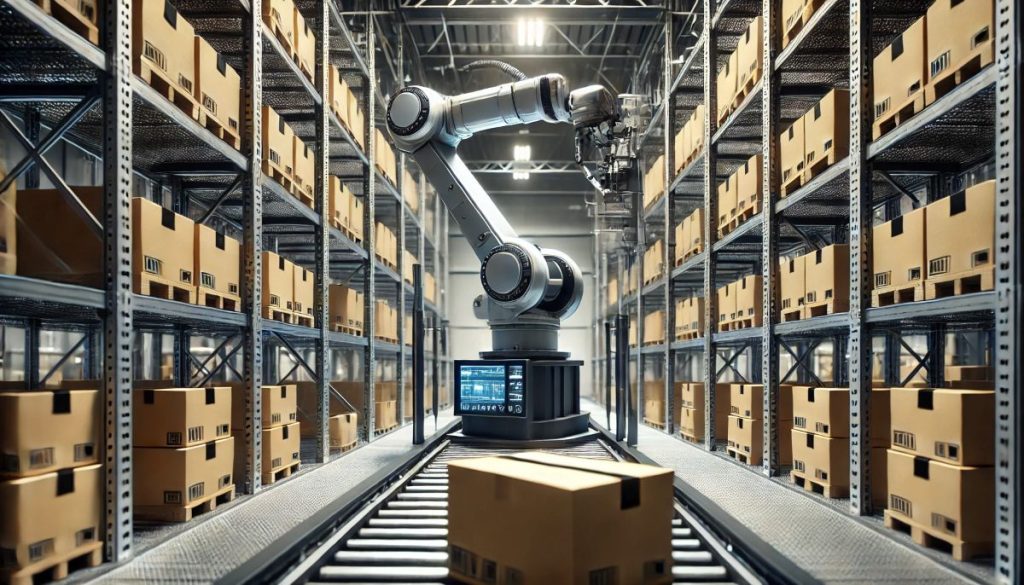Warehouse Automation is Booming, But There’s a Catch
Robotics is transforming warehouse operations, but there’s a fundamental problem that few anticipated: robots don’t naturally work together. Companies deploying automation often assume that adding more robots will lead to higher efficiency, only to find that different machines operate in silos, unable to coordinate tasks or share data. The result is a fragmented system where automation doesn’t deliver its full potential.
The industry is at an inflection point. With the rapid rise of robotics vendors and the increasing complexity of supply chains, the ability to integrate robots from multiple manufacturers is no longer a nice-to-have—it’s essential for any business looking to scale automation successfully.
The Interoperability Crisis That’s Holding Businesses Back
Companies deploying warehouse robots quickly realize that different systems don’t naturally communicate. Robots from one vendor can’t coordinate with another brand’s machines. Fleet management is often split across multiple dashboards, making it difficult to assign tasks dynamically. Warehouse management systems (WMS) and enterprise resource planning (ERP) software don’t always support seamless integration with automation, forcing companies into expensive, time-consuming custom programming.
The lack of interoperability isn’t just a technical challenge—it’s a major operational risk. Robots unable to work together lead to inefficiencies, longer fulfillment times, and higher costs. Instead of creating a streamlined, scalable warehouse, companies are left with isolated automation that requires constant human intervention.
The problem extends beyond warehouses. Amazon has encountered integration challenges when introducing robotics acquired from different companies into its fulfillment centers. GXO Logistics has faced hurdles in coordinating multiple automation solutions across its vast distribution network. Even DHL, which operates some of the most sophisticated logistics hubs in the world, has had to invest heavily in middleware solutions to ensure its multi-vendor robotic fleets can function as a unified system.
Why Standards Alone Won’t Solve the Problem Anytime Soon
There are efforts to create universal standards for robotics interoperability. The VDA 5050 initiative in Europe and MassRobotics’ Interoperability Standard in the U.S. are both attempts to develop common communication protocols. Open-source frameworks like the Robot Operating System (ROS) provide a foundation for integration.
But while these efforts are promising, they are not yet widely implemented. Robotics vendors are hesitant to fully embrace open standards, preferring to lock customers into proprietary ecosystems. Even where standards exist, companies still face compatibility issues between different generations of hardware and software. Businesses that need interoperability today can’t afford to wait for the industry to align on universal protocols.
How Leading Companies Are Solving Interoperability Right Now
Faced with the limitations of current standards, some of the largest logistics operators are taking matters into their own hands. DHL has developed internal middleware solutions that allow robots from different manufacturers to function within a single framework. GXO Logistics has deployed an integration platform that enables various automation technologies to communicate seamlessly, optimizing workflow coordination.
Amazon, a pioneer in robotics investment, has had to navigate the complexity of integrating machines from different acquisitions, including Kiva Systems, Canvas Technology, and Cloostermans. Rather than relying solely on external standards, Amazon has built proprietary integration layers that allow these disparate systems to work together while still ensuring flexibility for future automation investments.
PwC’s case study on SGTraDex highlights how interoperability enhances supply chain resilience: “Its interoperability allows different systems and platforms to exchange data securely and in real-time, reducing the risks of errors, fraud, and delays….
Businesses that rely on single-vendor automation solutions may find themselves vulnerable to supply chain disruptions, vendor pricing power, or sudden shifts in technology. Companies that invest in interoperability now will be better positioned to adapt to industry changes, rather than being locked into rigid systems that limit growth.
Beyond the Technical Fix: Why Interoperability is a Business Strategy
Warehouse interoperability isn’t just about making robots talk to each other. It’s about future-proofing operations, ensuring that automation investments don’t become obsolete as new technology emerges. A flexible, integrated system allows businesses to introduce new robotics vendors without costly reprogramming, scale automation seamlessly, and dynamically adjust workflows based on demand fluctuations.
Companies that take a proactive approach to interoperability can increase fulfillment speed, reduce downtime, and make more data-driven decisions about warehouse optimization. The ability to coordinate robotic fleets efficiently means businesses can optimize picking, packing, and sorting workflows in real time, rather than relying on static processes that don’t adapt to operational needs.
As the robotics industry evolves, the ability to integrate diverse automation solutions will be the defining factor between those who succeed and those who struggle with inefficiencies. The challenge isn’t deploying more robots—it’s making them work together in a way that delivers tangible business value.
The Future of Warehouse Robotics is Integrated, Not Isolated
For companies that get this right, the benefits are massive. A warehouse where all automation functions as a single, intelligent ecosystem unlocks higher productivity, lower costs, and greater operational flexibility. Those who ignore the interoperability challenge risk creating fragmented systems that require expensive workarounds and constant human intervention.
The companies that will lead in warehouse automation aren’t just investing in robots. They’re investing in the infrastructure that allows those robots to work together, adapt to new challenges, and drive long-term efficiency gains. In the race for warehouse automation, integration is the key to winning.








